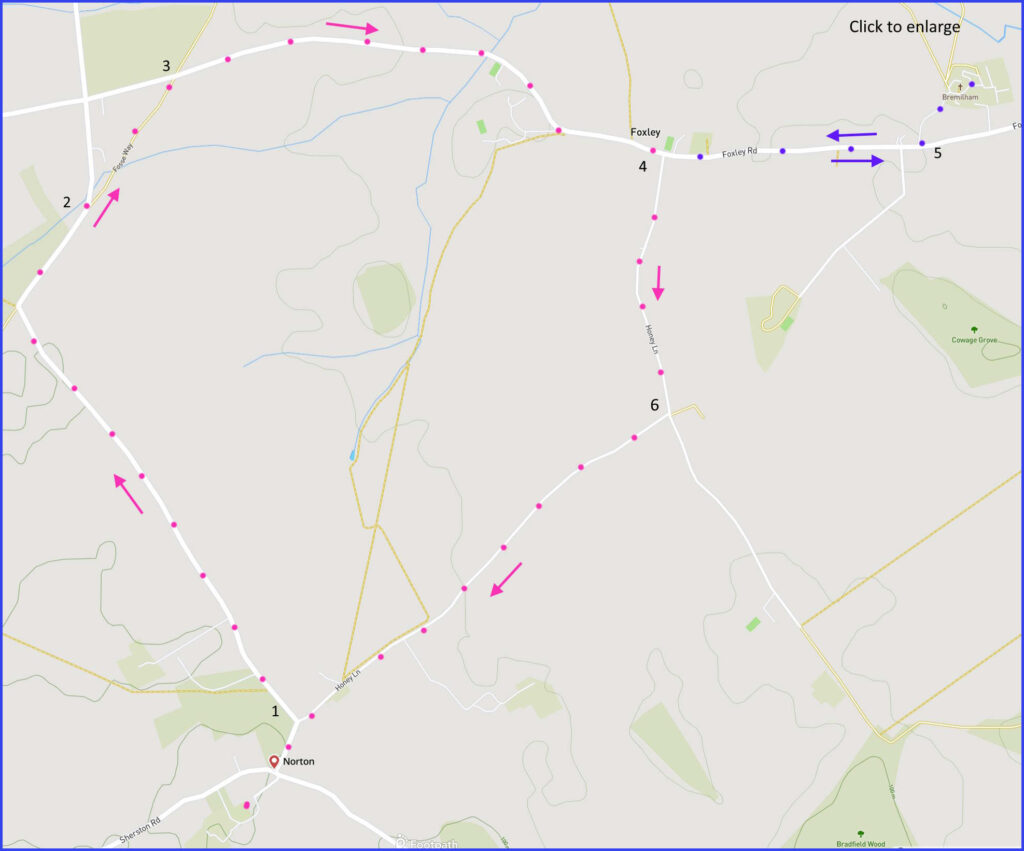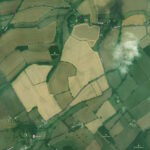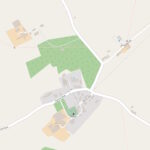(Routes suggested from each map point + metres to next point)
Start: Parking is possible on grass outside church gate. Walk past two cottages on right to Sherston Road junction. Follow opposite road signed to Foxley/Malmsbury towards Y-junction: 270m
1: Take left fork, follow until becomes bridleway path to right: 1.7km
2: Follow until meets main Foxley Road: 400m
3: Head right towards and into Foxley: 1.3Km
4: Pass sign to Norton, walking until farm buildings wide entrance: 650m
5: Enter and walk toward centre of small business estate and small church. Return to Norton Road: 1Km
4: Take this Honey Lane until sharp right turn: 660m
6: Continue walking to Vine Inn and return to starting point: 1.4K
The pictures below are in the order things were seen on this walk. Clicking on any one will enlarge it (and the slideshow)
This is an easy square-shaped walk that starts in the small village of Norton and heads north to similarly small Foxley where you take in the associated settlement of Bremilham (with its very unusual church). Finally, you return to Norton (perhaps stopping at the Vine Inn). All this walking is on roads and lanes, A little narrow at very start but quickly widens and offers reasonable verges but, anyway, there is very little local traffic. Parking is possible on the grass area outside the church or small pull-in just before.
Norton
There is reference to this village in Anglo Saxon times: King Athelstan granted land here to Malmesbury Abbey (who kept it until the monasteries were dissolved). However, it seems that Norton was always a very small settlement – and remains so today.
Of the church, Pevsner says “Humble with a presumptuous Italianate bell turret”. In the 18th century much of the Norton estate had been passed to Jospeh Neeld of Grittleton (see our walk there). Neeld was said by some to be the richest man in England at the time. Amongst other building work, his money funded significant restoration of the Norton church, with the bell turret being part of that – albeit as an item that Neeld had rejected as a turret scheduled for his own Grittleton House.
Close to the church you may catch a glimpse through gates of Norton Manor (1623). Among its recent owners perhaps the most colourful is Count Jan Badeni – a Polish member of the Austro-Hungarian aristocracy who in the 1930s had been forced to flee from German invasion. He became part of the UK military and while stationed in Wiltshire he married June Wilson, the daughter of a local landowner. The now ‘Countess Badeni’ achieved some fame as a popular novelist as well as chronicler of west country notables. She lived out her years in Norton Manor with an Indian servant – a situation described as ‘touching’ by the Daily Mail (but noxious by other commentators).
The road out of Norton is a pleasant walk, although narrow in some places [E]. It is the part where you might be most likely to meet a vehicle. But the area is very quiet and very silent. (Although surely the walker’s predicament is bound to worsen as electric cars appear on roads – a development that must require more sensitivity in detecting them coming.)
Foxley
The east-west road to Foxley runs between Malmesbury and Sherston but vehicles seem even scarcer here and verges very wide. Note that at points 2-3 on the map for this route you walk for a brief period on the Fosse Way – one of the great Roman roads of England. Look behind at this point and you see where It heads south to the M4 and beyond – in the typically dead straight course of those ancient roads.
Beyond the road sign welcoming you to Foxley [F] there is a bend with a lane off to the right. This leads to 17th century Foxley Manor – once home to John Ayliffe (sometimes ‘Ayloffe’) the 17th century satirist and republican (involved in attempts to assassinate Charles II). His family is much memorialised in the parish church. There has been a church here since the 12th century, although the present building is largely 15th. Note the Arts and Crafts south window (figures dressed more for battle than heaven). And walk around the churchyard to admire the Foxley House rectory that is adjacent.
Bremilham
Bremilham – “village where brambles grow”. Going here involves the questionable walking practice of doubling back on yourself. But its worth it to see the church at Bremilham [I]. Worth it if only to say that you hare visited the smallest church in England. This is a fact that is slightly spoiled by discovering that it is actually the surviving bit of an earlier full size church, the greater part of which was demolished in the 19th century. Nevertheless Bremilham can claim its status as a self-contained, fully functional church. Although it only has one service a year (Rogation Sunday if you are interested) – but typically well attended, so arrive early.
This building is embedded in what seems to be a very small business park but also includes a much older farm. When the current farm owners arrived they found the church building had become a place to house turkeys. But it was these new owners that got the church back into its full status.
Doubling back leads to taking the left turn lane to Norton. Not such an interesting road but you may well find release at the Vine Tree Inn. It’s an agreeable pub with a large garden area – a pleasant ambience, but sometimes spoiled by loudspeakers delivering dull pop music to the outdoors. Strange idea – but you can sit far away in the spacious garden area perhaps.




![[A]](https://wiltshirewalks.com/wp-content/uploads/2023/05/norton01-150x150.jpg)
![[B]](https://wiltshirewalks.com/wp-content/uploads/2023/05/norton02-150x150.jpg)
![[C]](https://wiltshirewalks.com/wp-content/uploads/2023/05/norton03-150x150.jpg)
![[D]](https://wiltshirewalks.com/wp-content/uploads/2023/05/norton04-150x150.jpg)
![[E]](https://wiltshirewalks.com/wp-content/uploads/2023/05/norton05-150x150.jpg)
![[F]](https://wiltshirewalks.com/wp-content/uploads/2023/05/norton06-150x150.jpg)
![[G]](https://wiltshirewalks.com/wp-content/uploads/2023/05/norton07-150x150.jpg)
![[H]](https://wiltshirewalks.com/wp-content/uploads/2023/05/norton08-150x150.jpg)
![[I]](https://wiltshirewalks.com/wp-content/uploads/2023/05/norton09-150x150.jpg)